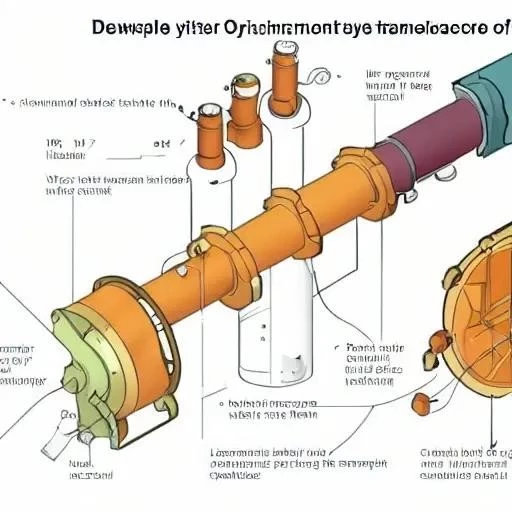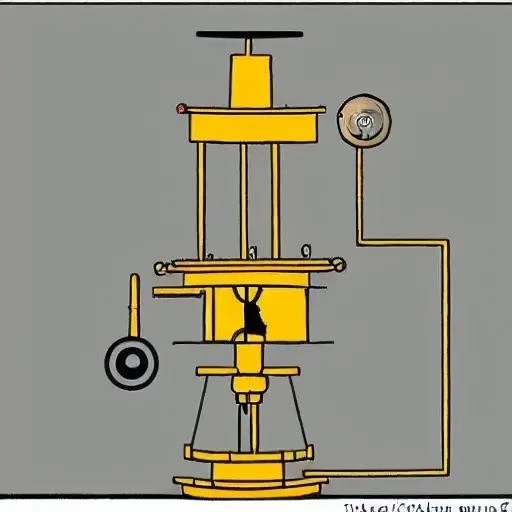In the exhilarating world of automotive engineering, few components are as pivotal yet often overlooked as the car transmission; This unsung hero, tirelessly translating raw engine power into usable motion, has undergone a breathtaking transformation, dictating not just how fast you accelerate, but the very essence of your driving pleasure․ From the visceral engagement of a manual gearbox to the sophisticated intelligence of modern automatics, understanding these mechanical marvels is key to unlocking a truly optimized and enjoyable experience on the open road․
Today, drivers are presented with an astonishing array of choices, each promising a distinct connection between driver and machine․ Whether you crave the precise control of a traditional manual or the seamless efficiency of the latest automated systems, the landscape of car transmissions is richer and more diverse than ever before․ For those considering a new vehicle, like the discerning individuals weighing options such as the Lexus IS350, Infiniti Q50s, Acura TLX, or Mercedes C63 AMG, deciphering these intricate powertrains becomes a critical decision, shaping everything from fuel economy to spirited performance․
Here’s a snapshot of the primary transmission types revolutionizing our driving experience:
| Transmission Type | Key Characteristics | Pros | Cons | Common Applications/Examples |
|---|---|---|---|---|
| Manual Transmission (MT) | Driver-controlled gear shifts via a clutch pedal and gearstick․ | Maximum driver engagement, precise control, often more affordable․ | Requires skill and practice, can be tiring in heavy traffic․ | Sports cars (Mazda MX-5), performance vehicles (Honda Civic Si)․ |
| Traditional Automatic (AT/Torque Converter) | Uses a fluid coupling (torque converter) and planetary gearsets to shift gears automatically․ | Smooth, effortless driving, ideal for city traffic․ | Historically less fuel-efficient, can feel less connected than MT/DCT․ | Lexus IS350 (RWD 8AT), Infiniti Q50S (7AT)․ |
| Dual-Clutch Transmission (DCT) | Features two separate clutches for odd and even gears, pre-selecting the next gear for rapid shifts․ | Extremely fast, precise shifts; excellent efficiency; sporty feel․ | Can be complex, sometimes exhibits low-speed jerkiness․ | Acura TLX (I4 8DCT), Porsche PDK, VW DSG․ |
| Continuously Variable Transmission (CVT) | Operates without fixed gears, using a belt or chain and pulleys to provide an infinite range of gear ratios․ | Incredibly smooth acceleration, excellent fuel economy․ | Can produce a “rubber band” effect (engine revs without proportional speed increase), some past reliability concerns․ | Many Nissan models, Honda Civic, Toyota Corolla․ |
| Automated Manual Transmission (AMT) | Essentially a manual gearbox with an automated clutch and gear selector․ | Cost-effective automation, good fuel efficiency․ | Can have slower, less smooth shifts compared to ATs or DCTs․ | Entry-level compact cars in various markets․ |
| Advanced Automatics (e․g․, ZF 9AT) | Sophisticated automatics integrating features like dog clutches for enhanced efficiency and ratio spread․ | Exceptional fuel economy, wide gear ratio spread for diverse driving․ | Initial generation models might have required software/hardware refinements for optimal smoothness․ | Acura TLX (V6 9AT)․ |
For further technical details and specific vehicle comparisons, consult official manufacturer websites․
The Enduring Appeal of the Manual and the Rise of Automated Precision
For decades, the manual transmission stood as the undisputed champion of driver engagement, offering an unparalleled sense of control and connection to the machine․ The rhythmic dance of clutch and shifter, the precise rev-matching for a perfect downshift—these were the hallmarks of true driving artistry․ While the sheer number of manual offerings has declined, its spirit lives on, not only in purist vehicles like the Mazda MX-5 but also in the sophisticated paddle shifters that have become standard fare in performance-oriented automatics․ As one experienced driver noted, “Paddle shifters, I guess, are now the norm and what I’m looking for if I can’t have a clutch pedal․” This sentiment perfectly encapsulates the modern driver’s desire for active involvement, even when foregoing the traditional third pedal․
The Torque Converter’s Evolution: From Smoothness to Sportiness
Traditional automatic transmissions, characterized by their torque converters, have long been lauded for their inherent smoothness and ease of use․ Initially, they might have felt “fluid coupled,” somewhat detaching the driver from the engine’s direct response․ However, modern automatics have dramatically evolved․ Take, for instance, the Lexus IS350’s RWD 8AT, celebrated for its decent ratio spread, or the Infiniti Q50S’s 7AT, which delivers surprisingly fast shifts for a conventional automatic․ The pinnacle of this evolution is seen in systems like the Mercedes-Benz C63 AMG’s 7AT, which ingeniously swaps the traditional torque converter for a multi-clutch pack, effectively removing that ‘fluid coupled’ sensation and injecting a thrilling directness into every gear change․ This innovation demonstrates a clear intent: to merge automatic convenience with manual-like responsiveness․
Dual-Clutch Dynamism: Bridging Two Worlds
Perhaps no transmission type better exemplifies the fusion of manual control and automatic convenience than the Dual-Clutch Transmission (DCT)․ As the user insights compellingly highlight, a DCT, like the “VERY sweet 8DCT” found in the Acura TLX’s I4 engine variant, offers lightning-fast shifts and remarkable responsiveness․ Operating with two sets of clutches—one for odd gears, one for even—it anticipates the next gear, ensuring a near-instantaneous transition․ This ingenious design, often complemented by a torque converter to smooth out initial engagement, makes DCTs a highly recommended choice for those transitioning from manuals, offering an exhilarating, direct connection without the physical effort of a clutch pedal․ Their efficiency and performance dynamics are truly transforming the driving experience for many․
The CVT Conundrum: Smooth Operator or Performance Compromise?
Continuously Variable Transmissions (CVTs) represent a distinctly different approach to power delivery․ By eschewing fixed gears in favor of a belt or chain running between two variable-diameter pulleys, CVTs offer an incredibly smooth, seamless acceleration devoid of traditional shift points․ This ‘gearless’ operation often translates into superior fuel economy, a compelling advantage in today’s environmentally conscious market․ However, their unique characteristic can sometimes lead to a “rubber band” effect, where engine RPMs climb without a proportional increase in vehicle speed, which can feel less engaging to some drivers․ While many manufacturers have refined CVTs to mitigate these perceptions, the user data points to an important caveat: “Not all CVTs, but 100 Nissan CVTs,” suggesting that quality and driver satisfaction can vary significantly across brands․ The industry is constantly innovating, striving to enhance the driving feel of CVTs while retaining their efficiency benefits․
The Future is Now: Innovation Across the Spectrum
Looking ahead, the evolution of car transmissions is far from complete․ Beyond the prominent types, we see sophisticated systems like the ZF 9AT in the Acura TLX V6, which incorporates unique “dog clutches” to drastically reduce driveline frictional losses, achieving an enormous ratio spread and impressive fuel efficiency․ While early versions required refinement, the 2016 models resolved these issues, demonstrating continuous improvement in complex engineering․ Furthermore, the burgeoning electric vehicle (EV) market is prompting radical new transmission designs, with the Global Electric Vehicle Transmission Market projected for robust growth, indicating a future where new paradigms in power delivery will emerge, potentially integrating seamlessly with AI-driven vehicle controls․ These advancements promise not just efficiency, but a future where every drive is optimized for performance, comfort, and personalized exhilaration․
The journey through the world of car transmissions reveals a fascinating interplay of mechanical ingenuity and driver preference․ From the raw, engaging manual to the incredibly sophisticated, multi-clutch automatics and the smooth, efficient CVTs, each type offers a unique proposition․ As technology relentlessly advances, we can optimistically anticipate even more dynamic, intelligent, and engaging transmission systems that will redefine our relationship with the automobile, making every journey not just a commute, but a truly remarkable driving adventure․






